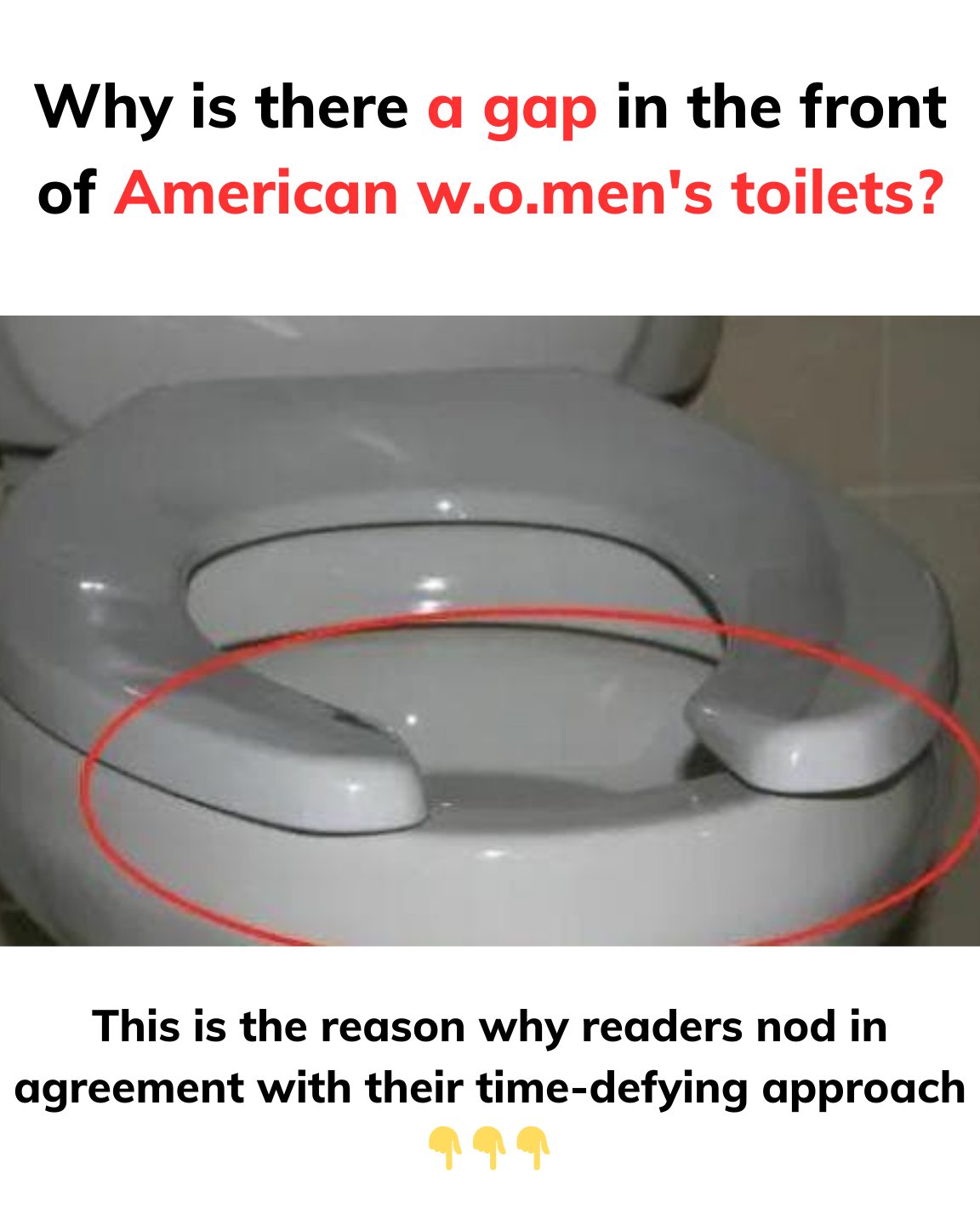When it comes to toilet design in public restrooms, the United States has its own unique approach that often stands out. As an advanced country, the U.S. prioritizes hygiene, safety, and functionality in many aspects of daily life, including restroom design. One notable feature of American public toilets, particularly in women’s restrooms, is the U-shaped toilet seat with a gap in the front. This design, though common in the U.S., often raises questions among visitors unfamiliar with its purpose. So, why exactly does this gap exist, and what makes it so significant?

The primary reason for the U-shaped toilet seat with a front gap lies in practicality and hygiene. Unlike a fully enclosed toilet seat, the U-shape is specifically designed to prevent direct contact between a person’s private parts and the seat. This reduces the risk of infection or contamination, which is particularly important in public restrooms where multiple users share the same facilities. For women, the open-front design provides additional convenience by minimizing contact during use, making it both safer and more hygienic.
Another reason for the gap in U-shaped seats relates to waste disposal. The gap allows for better airflow around the seat, which helps reduce unpleasant odors and promotes circulation when waste is discharged. Without this design, the tight seal created by a fully enclosed seat could trap air, leading to a less comfortable and less sanitary experience. The gap essentially acts as a small yet effective ventilation feature, enhancing the overall usability of public toilets.
In addition to the U-shaped design, American public restrooms often include toilet seat covers for added hygiene. These disposable pads are placed on the seat before use and discarded afterward, ensuring each user has a clean surface to sit on. This practice, combined with the open-front seat design, reflects the emphasis Americans place on personal safety and cleanliness in shared spaces. Public restrooms are designed with the understanding that high foot traffic requires measures to minimize the spread of germs and promote user comfort.
While the U-shaped seat with a gap is widely used in the United States, it’s worth noting that cultural and physical differences influence restroom design in other parts of the world. In many Asian countries, for example, toilet seats often lack this distinctive gap. This is partly because traditional squat toilets remain common in some regions, and even where Western-style toilets are used, the fully enclosed seat design is more prevalent. Cultural norms and the relatively smaller physical stature of individuals in these regions contribute to the difference. For many Asians, the absence of a gap doesn’t pose a significant issue, as their posture and build allow them to use a fully enclosed seat comfortably.
Another factor that influences toilet design is the perception of hygiene. While Americans prioritize measures like the U-shaped seat and disposable covers to reduce contact, other cultures address hygiene concerns differently. In Japan, for example, high-tech bidet toilets with self-cleaning features are common, offering an entirely different approach to cleanliness and comfort. These cultural variations highlight how each country adapts restroom design to meet the needs and preferences of its population.
Despite the practicality of the U-shaped seat, it has its critics. Some argue that the gap can make the seat feel less supportive or leave users feeling less secure, especially in restrooms with older or less stable facilities. However, for most Americans, the benefits far outweigh these minor drawbacks. The design has become a standard in public restrooms across the country, valued for its functionality and the added hygiene it offers.
Ultimately, the U-shaped toilet seat with a gap in the front is a small but meaningful detail that reflects American priorities when it comes to public spaces. It combines safety, convenience, and hygiene into a design that serves millions of people daily. While it may seem unusual or unnecessary to those unfamiliar with it, the rationale behind the design is clear once its benefits are understood.
Cultural and regional differences in toilet design remind us that even the most ordinary aspects of life can vary significantly across the world. The U-shaped toilet seat is just one example of how practicality and hygiene take center stage in American public restrooms, offering a glimpse into the priorities and values of a society that continually adapts its surroundings to meet the needs of its people.





